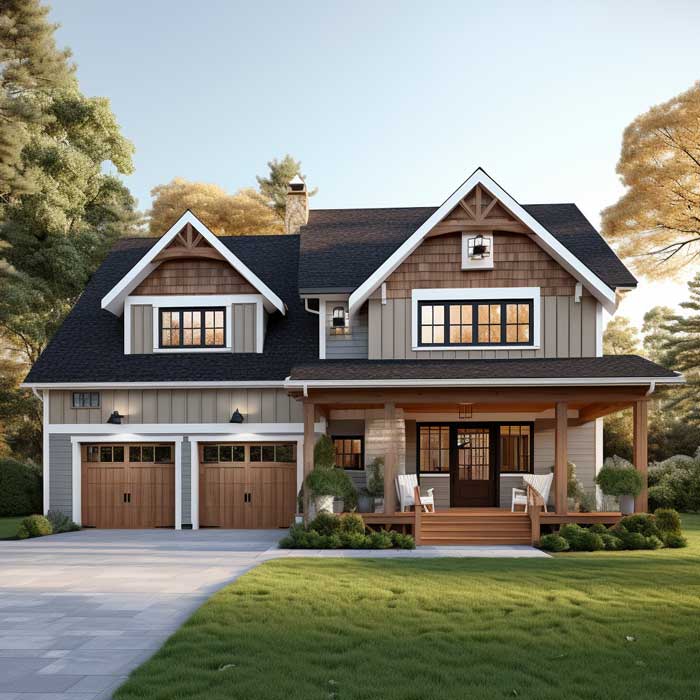Engineered Wood Siding: The Perfect Combination of Aesthetics and Durability
In the realm of residential siding, engineered wood siding emerges as a stellar example of modern innovation seamlessly blended with the timeless charm of wood. Engineered wood siding combines the natural beauty of wood with enhanced durability and moisture resistance, making it a favored choice among homeowners and professionals alike.
Description and Composition
Engineered wood siding, often referred to as composite wood siding, is a composite material comprised primarily of wood fibers, wax, resin, and other additives. This unique composition provides the best of both worlds: the authentic look of wood and the added strength and resistance to moisture and decay.
Styles and Finishes Available
Engineered wood siding comes in various styles and finishes, including lap siding, shingle-style siding, and panel siding. The finishes replicate the appearance of traditional wood grains and textures, allowing for customization and the creation of distinct exterior designs.
Durability and Moisture Resistance
One of the standout features of engineered wood siding is its exceptional durability and resistance to moisture. It resists warping, splitting, and rot, even when exposed to wet conditions. This moisture resistance makes it an excellent choice for coastal or rainy regions.
Installation and Maintenance Considerations
Proper installation of engineered wood siding is essential to ensure its moisture resistance and longevity. It requires meticulous attention to detail, including sealing and finishing. Maintenance primarily involves cleaning to remove dirt and mildew, ensuring that the material retains its beauty and protective properties.
Average Lifespan and Cost
The lifespan of engineered wood siding typically ranges from 20 to 30 years or more, depending on factors such as climate, maintenance, and the quality of installation. While it may have a higher initial cost than some alternatives, its long-term durability and minimal maintenance requirements make it a cost-effective choice.
Advantages and Disadvantages
Advantages |
Disadvantages |
|
Wood Aesthetic: Engineered wood siding replicates the natural look of wood with authenticity, offering homeowners the warmth and charm of wood without the drawbacks. Durability: Engineered wood siding is highly durable and moisture-resistant, making it an excellent choice for regions with varying climates. Versatile Styles: It comes in a variety of styles and finishes, allowing homeowners to achieve the desired architectural appearance. Easy Maintenance: Engineered wood siding requires minimal maintenance compared to traditional wood siding, eliminating the need for painting or staining. |
Cost: While it offers excellent long-term value, engineered wood siding may have a higher initial cost compared to some other siding materials. Limited Lifespan: While durable, the lifespan of engineered wood siding is generally shorter than natural wood siding, typically around 20 to 30 years. Installation Complexity: Proper installation is crucial to ensure the material's moisture resistance and longevity. |
Popular Brands and Product Options
Prominent brands in the engineered wood siding industry include LP SmartSide, Trespa, and Boral TruExterior. These brands offer a wide selection of engineered wood siding products, allowing homeowners and professionals to choose from various colors, styles, and profiles to achieve their desired exterior appearance.

